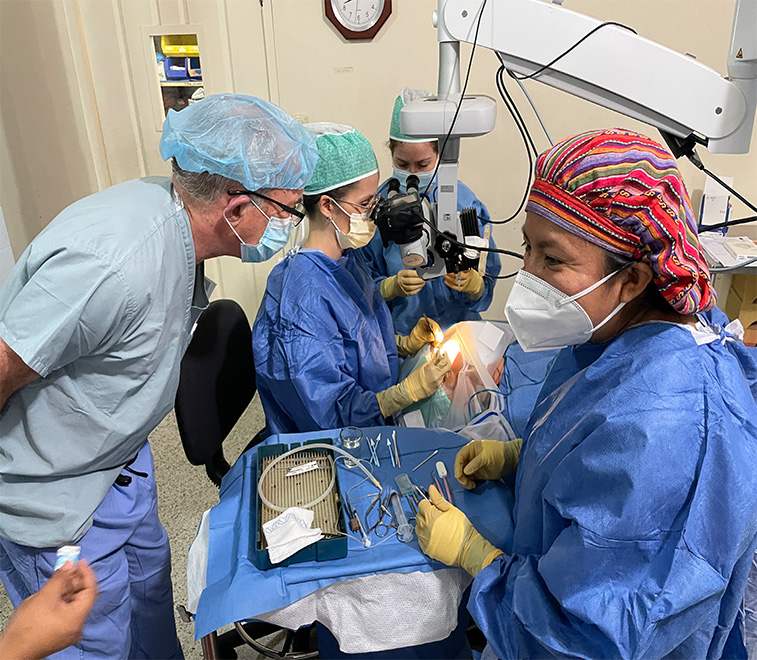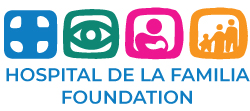
Ophthalmology Fellowship
in Complex Glaucoma and
Anterior Segment Surgery

Overview
The La Familia Eye Center in Western Guatemala provides clinical and surgical eye care for the region of Western Guatemalan and Southern Chiapas, Mexico. The LFEC receives educational and financial support from donors within and outside of Guatemala, as well as many ophthalmic corporations and humanitarian agencies. Employment of early and late-career ophthalmologists at LFEC both serves the regional population and provides extraordinary experience and training. An International Fellowship at LFEC provides an unique and prized bedrock for anyone selected to participate.
This 24-month fellowship is based at the LFEC and has an international component at University of Colorado Hospital (UCH) During the 6 weeks in Colorado, fellows will be supervised by Dr. Malik Kahook. While at LFEC, fellows are supervised by Drs. Sofia Bravo Beltranena (Cornea, Ant Seg), Claudia Terraza (Ant Seg), Melani Gil (Glaucoma, Ant Seg) and María Isabel Matheu (Retina, Ant Seg). Additional supervision will be provided by international ophthalmologists who serve on the LFEC international Faculty (IF) and visit on-site for 8-10 weeks of the year. The IF includes Drs. George Tanaka (glaucoma), Seema Capoor (cornea), Geoff Emerick (glaucoma), Jorge Hernandez (glaucoma), Andy Sorenson (cornea/ant seg), Steven Pascal (ant seg), Lisa Park (ant seg), Bob Sorenson (cataract), Rupert Chowins (optometry), and Rodolfo Perez (glaucoma).
Goals of Fellowship
The LFEC-CU International Fellowship prepares ophthalmologists from Guatemala and neighboring countries to diagnose, manage and treat highly complex glaucoma, cataract, corneal and anterior segment and medical retina diseases common to Western Guatemala. A cognitive and technical skill level expertise will be attained during the Fellowship.
Clinical and surgical experience
Fellows will engage in high level collaborative and independent decision making and surgical performance. Due to the advanced nature of the regional pathology, Fellows will conclude their training with one of the highest case logs available in the region.

Educational Goals

Educational Experiences
Research Responsibilities
Fellows are expected to complete one or more research projects during their training. The fellow is encouraged to present their research at academic meetings such as the American Academy of Ophthalmology (AAO), Association for Research in Vision and Ophthalmology (ARVO), and American Glaucoma Society (AGS), American Society of Cataract and Refractive Surgery (ASCRS) as well as other subspecialty meetings in Central America. Presentation at the University of Colorado Annual Resident, Fellow, and Alumni Research Day in July is a possibility. It is anticipated that the fellow will publish
one or more papers during his/her fellowship.
Duration of Fellowship
2-year full-time commitment to the La Familia Eye Center

Benefits
Prior to submitting application
If, after reviewing these websites and requirements, you feel you qualify for our fellowship, please submit an application
to the Fellowship Coordinator at lafamiliaeyecenter@hdlff.org.
We ask that you also submit the following supplemental materials via email by October 1 of each year.
Fellowship decision for each year made by October 15 of each year for the upcoming January Fellowship start.







